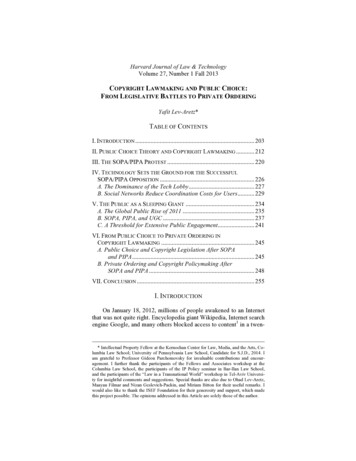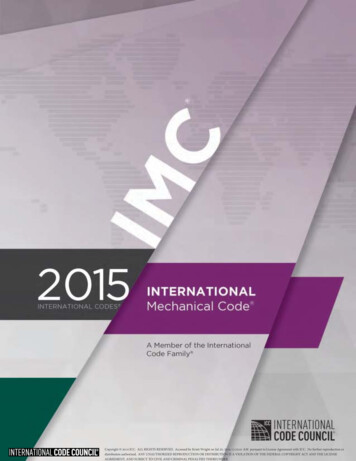
Transcription
Copyright 2014 ICC. ALL RIGHTS RESERVED. Accessed by Kristi Wright on Jul 20, 2016 11:32:41 AM pursuant to License Agreement with ICC. No further reproduction ordistribution authorized. ANY UNAUTHORIZED REPRODUCTION OR DISTRIBUTION IS A VIOLATION OF THE FEDERAL COPYRIGHT ACT AND THE LICENSEAGREEMENT, AND SUBJECT TO CIVIL AND CRIMINAL PENALTIES THEREUNDER.
2015 IMC INTERNATIONALMechanical Code CODE ALERT!Sign up now to receive critical code updates and free access to videos,book excerpts and training resources.Signup is easy, subscribe now! www.iccsafe.org/alertsCopyright 2014 ICC. ALL RIGHTS RESERVED. Accessed by Kristi Wright on Jul 20, 2016 11:32:41 AM pursuant to License Agreement with ICC. No further reproduction ordistribution authorized. ANY UNAUTHORIZED REPRODUCTION OR DISTRIBUTION IS A VIOLATION OF THE FEDERAL COPYRIGHT ACT AND THE LICENSEAGREEMENT, AND SUBJECT TO CIVIL AND CRIMINAL PENALTIES THEREUNDER.
2015 International Mechanical Code First Printing: May 2014Second Printing: September 2015Third Printing: November 2015ISBN: 978-1-60983-479-1 (soft-cover edition)ISBN: 978-1-60983-478-4 (loose-leaf edition)COPYRIGHT 2014byINTERNATIONAL CODE COUNCIL, INC.Date of First Publication: May 30, 2014ALL RIGHTS RESERVED. This 2015 International Mechanical Code is a copyrighted work owned by the International CodeCouncil, Inc. Without advance written permission from the copyright owner, no part of this book may be reproduced, distributed, or transmitted in any form or by any means, including, without limitation, electronic, optical or mechanical means (by wayof example, and not limitation, photocopying, or recording by or in an information storage retrieval system). For information onpermission to copy material exceeding fair use, please contact: Publications, 4051 West Flossmoor Road, Country Club Hills, IL60478. Phone 1-888-ICC-SAFE (422-7233).Trademarks: “International Code Council,” the “International Code Council” logo and the “International Mechanical Code” aretrademarks of the International Code Council, Inc.T018350PRINTED IN THE U.S.A.Copyright 2014 ICC. ALL RIGHTS RESERVED. Accessed by Kristi Wright on Jul 20, 2016 11:32:41 AM pursuant to License Agreement with ICC. No further reproduction ordistribution authorized. ANY UNAUTHORIZED REPRODUCTION OR DISTRIBUTION IS A VIOLATION OF THE FEDERAL COPYRIGHT ACT AND THE LICENSEAGREEMENT, AND SUBJECT TO CIVIL AND CRIMINAL PENALTIES THEREUNDER.
PREFACEIntroductionInternationally, code officials recognize the need for a modern, up-to-date mechanical codeaddressing the design and installation of mechanical systems through requirements emphasizingperformance. The International Mechanical Code , in this 2015 edition, is designed to meet theseneeds through model code regulations that safeguard the public health and safety in all communities, large and small.This comprehensive mechanical code establishes minimum regulations for mechanical systemsusing prescriptive and performance-related provisions. It is founded on broad-based principles thatmake possible the use of new materials and new mechanical designs. This 2015 edition is fully compatible with all of the International Codes (I-Codes ) published by the International Code Council(ICC), including the International Building Code , International Energy Conservation Code , International Existing Building Code , International Fire Code , International Fuel Gas Code , InternationalGreen Construction Code , International Plumbing Code , ICC Performance Code , International Private Sewage Disposal Code , International Property Maintenance Code , International ResidentialCode , International Swimming Pool and Spa Code , International Urban-Wildland Interface Code and International Zoning Code .The International Mechanical Code provisions provide many benefits, among which is the modelcode development process that offers an international forum for mechanical professionals to discuss performance and prescriptive code requirements. This forum provides an excellent arena todebate proposed revisions. This model code also encourages international consistency in the application of provisions.DevelopmentThe first edition of the International Mechanical Code (1996) was the culmination of an effort initiated in 1994 by a development committee appointed by the ICC and consisting of representatives ofthe three statutory members of the International Code Council at that time, including: Building Officials and Code Administrators International, Inc. (BOCA), International Conference of Building Officials (ICBO) and Southern Building Code Congress International (SBCCI). The intent was to draft acomprehensive set of regulations for mechanical systems consistent with and inclusive of the scopeof the existing model codes. Technical content of the latest model codes promulgated by BOCA,ICBO and SBCCI was utilized as the basis for the development. This 2015 edition presents the codeas originally issued, with changes approved through the ICC Code Development Process through2013. A new edition such as this is promulgated every 3 years.This code is founded on principles intended to establish provisions consistent with the scope of amechanical code that adequately protects public health, safety and welfare; provisions that do notunnecessarily increase construction costs; provisions that do not restrict the use of new materials,products or methods of construction; and provisions that do not give preferential treatment to particular types or classes of materials, products or methods of construction.AdoptionThe International Code Council maintains a copyright in all of its codes and standards. Maintainingcopyright allows ICC to fund its mission through sales of books, in both print and electronic formats.The International Mechanical Code is designed for adoption and use by jurisdictions that recognizeand acknowledge the ICC’s copyright in the code, and further acknowledge the substantial sharedvalue of the public/private partnership for code development between jurisdictions and the ICC.The ICC also recognizes the need for jurisdictions to make laws available to the public. All ICCcodes and ICC standards, along with the laws of many jurisdictions, are available for free in a nondownloadable form on the ICC’s website. Jurisdictions should contact the ICC at adoptions@iccsafe.org to learn how to adopt and distribute laws based on the International Mechanical Code in amanner that provides necessary access, while maintaining the ICC’s copyright.2015 INTERNATIONAL MECHANICAL CODE iiiCopyright 2014 ICC. ALL RIGHTS RESERVED. Accessed by Kristi Wright on Jul 20, 2016 11:32:41 AM pursuant to License Agreement with ICC. No further reproduction ordistribution authorized. ANY UNAUTHORIZED REPRODUCTION OR DISTRIBUTION IS A VIOLATION OF THE FEDERAL COPYRIGHT ACT AND THE LICENSEAGREEMENT, AND SUBJECT TO CIVIL AND CRIMINAL PENALTIES THEREUNDER.
MaintenanceThe International Mechanical Code is kept up to date through the review of proposed changes submitted by code enforcing officials, industry representatives, design professionals and other interested parties. Proposed changes are carefully considered through an open code developmentprocess in which all interested and affected parties may participate.The contents of this work are subject to change through both the code development cycles andthe governmental body that enacts the code into law. For more information regarding the codedevelopment process, contact the Codes and Standards Development Department of the International Code Council.While the development procedure of the International Mechanical Code ensures the highestdegree of care, the ICC, its members and those participating in the development of this code do notaccept any liability resulting from compliance or noncompliance with the provisions because the ICCdoes not have the power or authority to police or enforce compliance with the contents of thiscode. Only the governmental body that enacts the code into law has such authority.Code Development Committee Responsibilities(Letter Designations in Front of Section Numbers)In each code development cycle, proposed changes to this code are considered at the CommitteeAction Hearing by the International Mechanical Code Development Committee, whose action constitutes a recommendation to the voting membership for final action on the proposed change. Proposed changes to a code section that has a number beginning with a letter in brackets areconsidered by a different code development committee. For example, proposed changes to codesections that have [BG] in front of them (e.g., [BG] 309.1) are considered by the IBC — General CodeDevelopment Committee at the Committee Action Hearing.The content of sections in this code that begin with a letter designation is maintained by anothercode development committee in accordance with the following:[A] Administrative Code Development Committee;[BF] IBC — Fire Safety Code Development Committee;[BS] IBC — Structural Code Development Committee;[BG] IBC — General Code Development Committee;[E] International Energy Conservation Code Development Committee;[F] International Fire Code Development Committee; and[FG] International Fuel Gas Code Development Committee.For the development of the 2018 edition of the I-Codes, there will be three groups of code development committees and they will meet in separate years. Note that these are tentative groupings.iv2015 INTERNATIONAL MECHANICAL CODE Copyright 2014 ICC. ALL RIGHTS RESERVED. Accessed by Kristi Wright on Jul 20, 2016 11:32:41 AM pursuant to License Agreement with ICC. No further reproduction ordistribution authorized. ANY UNAUTHORIZED REPRODUCTION OR DISTRIBUTION IS A VIOLATION OF THE FEDERAL COPYRIGHT ACT AND THE LICENSEAGREEMENT, AND SUBJECT TO CIVIL AND CRIMINAL PENALTIES THEREUNDER.
Group A Codes(Heard in 2015, Code Change ProposalsDeadline: January 12, 2015)International Building Code– Fire Safety (Chapters 7, 8, 9, 14, 26)– Means of Egress(Chapters 10, 11, Appendix E)– General (Chapters 2-6, 12, 27-33,Appendices A, B, C, D, K)International Fuel Gas CodeInternational Existing Building CodeInternational Mechanical CodeInternational Plumbing CodeInternational Private SewageDisposal CodeInternational Property MaintenanceCodeInternational Residential Code– IRC-Mechanical (Chapters 12-24)– IRC-Plumbing(Chapters 25-33, Appendices G, I, N, P)International Swimming Pool and SpaCodeInternational Zoning CodeGroup B Codes(Heard in 2016, Code Change ProposalsDeadline: January 11, 2016)Group C Codes(Heard in 2017, Code Change ProposalsDeadline: January 11, 2017)Administrative Provisions (Chapter 1 ofall codes except IRC and IECC, administrative updates to currently referenced International Green Construction Codestandards, and designated definitions)International Building Code– Structural(Chapters 15-25, Appendices F, G,H, I, J, L, M)International Energy Conservation CodeInternational Fire CodeInternational Residential Code– IRC-B (Chapters 1-10, Appendices E,F, H, J, K, L, M, O, R, S, T, U)International Wildland-Urban InterfaceCodeNote: Proposed changes to the ICC Performance Code will be heard by the code development committee noted in brackets [ ]in the text of the code.Code change proposals submitted for code sections that have a letter designation in front ofthem will be heard by the respective committee responsible for such code sections. Because different committees hold code development hearings in different years, proposals for this code will beheard by committees in both the 2015 (Group A) and the 2016 (Group B) code development cycles.For example, every section of Chapter 1 of this code is designated as the responsibility of theAdministrative Code Development Committee, and that committee is part of the Group B codehearings. This committee will conduct its code development hearings in 2016 to consider all codechange proposals for Chapter 1 of this code and proposals for Chapter 1 of all I-Codes except theInternational Energy Conservation Code, the ICC Performance Code and the International Residential Code. Therefore, any proposals received for Chapter 1 of this code will be deferred for consideration in 2016 by the Administrative Code Development Committee.Another example is Section 606.4 of this code which is designated as the responsibility of theInternational Fire Code Development Committee. This committee will conduct its code development hearings in 2016 to consider code change proposals in its purview, which includes any proposals to Section 606.4.In some cases, another committee in Group A will be responsible for a section of this code. Forexample, Section 607 has a [BF] in front of the numbered sections, indicating that these sections ofthe code are the responsibility of one of the International Building Code Development Committees.The International Building Code is in Group A; therefore, any code change proposals to this sectionwill be due before the Group A deadline of January 2015, and these code change proposals will beassigned to the appropriate International Building Code Development Committee for consideration.It is very important that anyone submitting code change proposals understand which code development committee is responsible for the section of the code that is the subject of the code changeproposal. For further information on the code development committee responsibilities, please visitthe ICC website at www.iccsafe.org/scoping.2015 INTERNATIONAL MECHANICAL CODE vCopyright 2014 ICC. ALL RIGHTS RESERVED. Accessed by Kristi Wright on Jul 20, 2016 11:32:41 AM pursuant to License Agreement with ICC. No further reproduction ordistribution authorized. ANY UNAUTHORIZED REPRODUCTION OR DISTRIBUTION IS A VIOLATION OF THE FEDERAL COPYRIGHT ACT AND THE LICENSEAGREEMENT, AND SUBJECT TO CIVIL AND CRIMINAL PENALTIES THEREUNDER.
Marginal MarkingsSolid vertical lines in the margins within the body of the code indicate a technical change from therequirements of the 2012 edition. Deletion indicators in the form of an arrow ( ) are provided inthe margin where an entire section, paragraph, exception or table has been deleted or an item in alist of items or a table has been deleted.A single asterisk [*] placed in the margin indicates that text or a table has been relocated withinthe code. A double asterisk [**] placed in the margin indicates that the text or table immediatelyfollowing it has been relocated there from elsewhere in the code. The following table indicates suchrelocations in the 2015 edition of the International Mechanical Code.2015 LOCATION2012 LOCATIONNoneNoneItalicized TermsSelected terms set forth in Chapter 2, Definitions, are italicized where they appear in code text.Such terms are not italicized where the definition set forth in Chapter 2 does not impart theintended meaning in the use of the term. The terms selected have definitions that the user shouldread carefully to facilitate better understanding of the code.vi2015 INTERNATIONAL MECHANICAL CODE Copyright 2014 ICC. ALL RIGHTS RESERVED. Accessed by Kristi Wright on Jul 20, 2016 11:32:41 AM pursuant to License Agreement with ICC. No further reproduction ordistribution authorized. ANY UNAUTHORIZED REPRODUCTION OR DISTRIBUTION IS A VIOLATION OF THE FEDERAL COPYRIGHT ACT AND THE LICENSEAGREEMENT, AND SUBJECT TO CIVIL AND CRIMINAL PENALTIES THEREUNDER.
EFFECTIVE USE OF THE INTERNATIONAL MECHANICAL CODEThe International Mechanical Code (IMC ) is a model code that regulates the design and installation of mechanical systems, appliances, appliance venting, duct and ventilation systems, combustion air provisions, hydronic systems and solar systems. The purpose of the code is to establish theminimum acceptable level of safety and to protect life and property from the potential dangersassociated with the installation and operation of mechanical systems. The code also protects thepersonnel that install, maintain, service and replace the systems and appliances addressed by thiscode.The IMC is primarily a prescriptive code with some performance text. The code relies heavily onproduct specifications and listings to provide much of the appliance and equipment installationrequirements. The general Section 105.2 and the exception to Section 403.2 allow designs andinstallations to be performed by approved engineering methods as alternatives to the prescriptivemethods in the code.The format of the IMC allows each chapter to be devoted to a particular subject with the exception of Chapter 3, which contains general subject matters that are not extensive enough to warranttheir own independent chapter.Chapter 1 Scope and Administration. Chapter 1 establishes the limits of applicability of thecode and describes how the code is to be applied and enforced. A mechanical code, like any othercode, is intended to be adopted as a legally enforceable document and it cannot be effective without adequate provisions for its administration and enforcement. The provisions of Chapter 1 establish the authority and duties of the code official appointed by the jurisdiction having authority andalso establish the rights and privileges of the design professional, contractor and property owner.Chapter 2 Definitions. Chapter 2 is the repository of the definitions of terms used in the body ofthe code. Codes are technical documents and every word and term can impact the meaning of thecode text and the intended results. The code often uses terms that have a unique meaning in thecode and the code meaning can differ substantially from the ordinarily understood meaning of theterm as used outside of the code.The terms defined in Chapter 2 are deemed to be of prime importance in establishing the meaning and intent of the code text that uses the terms. The user of the code should be familiar with andconsult this chapter because the definitions are essential to the correct interpretation of the codeand because the user may not be aware that a term is defined.Chapter 3 General Regulations. Chapter 3 contains broadly applicable requirements related toappliance location and installation, appliance and systems access, protection of structural elements,condensate disposal and clearances to combustibles, among others.Chapter 4 Ventilation. Chapter 4 includes means for protecting building occupant health by controlling the quality of indoor air and protecting property from the effects of inadequate ventilation.In some cases, ventilation is required to prevent or reduce a health hazard by removing contaminants at their source.Ventilation is both necessary and desirable for the control of air contaminants, moisture andtemperature. Habitable and occupiable spaces are ventilated to promote a healthy and comfortableenvironment for the occupants. Uninhabited and unoccupied spaces are ventilated to protect thebuilding structure from the harmful effects of excessive humidity and heat. Ventilation of specificoccupancies is necessary to minimize the potential for toxic or otherwise harmful substances toreach dangerously high concentrations in air.2015 INTERNATIONAL MECHANICAL CODE viiCopyright 2014 ICC. ALL RIGHTS RESERVED. Accessed by Kristi Wright on Jul 20, 2016 11:32:41 AM pursuant to License Agreement with ICC. No further reproduction ordistribution authorized. ANY UNAUTHORIZED REPRODUCTION OR DISTRIBUTION IS A VIOLATION OF THE FEDERAL COPYRIGHT ACT AND THE LICENSEAGREEMENT, AND SUBJECT TO CIVIL AND CRIMINAL PENALTIES THEREUNDER.
Chapter 5 Exhaust Systems. Chapter 5 provides guidelines for reasonable protection of life,property and health from the hazards associated with exhaust systems, air contaminants and smokedevelopment in the event of a fire. In most cases, these hazards involve materials and gases that areflammable, explosive, toxic or otherwise hazardous. Where contaminants are known to be presentin quantities that are irritating or harmful to the occupants’ health or are hazardous in a fire, bothnaturally and mechanically ventilated spaces must be equipped with mechanical exhaust systemscapable of collecting and removing the contaminants.This chapter contains requirements for the installation of exhaust systems, with an emphasis onthe structural integrity of the systems and equipment involved and the overall impact of the systems on the fire safety performance of the building. It includes requirements for the exhaust ofcommercial kitchen grease- and smoke-laden air, hazardous fumes and toxic gases, clothes dryermoisture and heat and dust, stock and refuse materials.Chapter 6 Duct Systems. Chapter 6 of the code regulates the materials and methods used forconstructing and installing ducts, plenums, system controls, exhaust systems, fire protection systems and related components that affect the overall performance of a building’s air distribution system and the reasonable protection of life and property from the hazards associated with air-movingequipment and systems. This chapter contains requirements for the installation of supply, returnand exhaust air systems. Specific exhaust systems are also addressed in Chapter 5. Information onthe design of duct systems is limited to that in Section 603.2. The code is very much concerned withthe structural integrity of the systems and the overall impact of the systems on the fire safety andlife safety performance of the building. Design considerations such as duct sizing, maximum efficiency, cost effectiveness, occupant comfort and convenience are the responsibility of the designprofessional. The provisions for the protection of duct penetrations of wall, floor, ceiling and roofassemblies are extracted from the International Building Code.Chapter 7 Combustion Air. Complete combustion of solid and liquid fuel is essential for theproper operation of appliances, for control of harmful emissions and for achieving maximum fuelefficiency.The specific combustion air requirements provided in previous editions of the code have beendeleted in favor of a single section that directs the user to NFPA 31 for oil-fired appliance combustion air requirements and the manufacturer’s installation instructions for solid-fuel burning appliances. For gas-fired appliances, the provisions of the International Fuel Gas Code are applicable.Chapter 8 Chimneys and Vents. Chapter 8 is intended to regulate the design, construction,installation, maintenance, repair and approval of chimneys, vents and their connections to solid andliquid fuel-burning appliances. The requirements of this chapter are intended to achieve the complete removal of the products of combustion from fuel-burning appliances and equipment. Thischapter includes regulations for the proper selection, design, construction and installation of achimney or vent, along with appropriate measures to minimize the related potential fire hazards. Achimney or vent must be designed for the type of appliance or equipment it serves. Chimneys andvents are designed for specific applications depending on the flue gas temperatures and the type offuel being burned in the appliance. Chimneys and vents for gas-fired appliances are covered in theInternational Fuel Gas Code.Chapter 9 Specific Appliances, Fireplaces and Solid Fuel-burning Equipment. Chapter 9sets minimum construction and performance criteria for fireplaces, appliances and equipment andprovides for the safe installation of these items. It reflects the code’s intent to specifically addressall of the types of appliances that the code intends to regulate. Other regulations affecting theinstallation of solid fuel-burning fireplaces, appliances and accessory appliances are found in Chapters 3, 6, 7, 8, 10, 11, 12, 13 and 14.viii2015 INTERNATIONAL MECHANICAL CODE Copyright 2014 ICC. ALL RIGHTS RESERVED. Accessed by Kristi Wright on Jul 20, 2016 11:32:41 AM pursuant to License Agreement with ICC. No further reproduction ordistribution authorized. ANY UNAUTHORIZED REPRODUCTION OR DISTRIBUTION IS A VIOLATION OF THE FEDERAL COPYRIGHT ACT AND THE LICENSEAGREEMENT, AND SUBJECT TO CIVIL AND CRIMINAL PENALTIES THEREUNDER.
Chapter 10 Boilers, Water Heaters and Pressure Vessels. Chapter 10 presents regulationsfor the proper installation of boilers, water heaters and pressure vessels to protect life and propertyfrom the hazards associated with those appliances and vessels. It applies to all types of boilers andpressure vessels, regardless of size, heat input, operating pressure or operating temperature.Because pressure vessels are closed containers designed to contain liquids, gases or both underpressure, they must be designed and installed to prevent structural failures that can result inextremely hazardous situations. Certain safety features are therefore provided in Chapter 10 toreduce the potential for explosion hazards.Chapter 11 Refrigeration. Chapter 11 contains regulations pertaining to the life safety of building occupants. These regulations establish minimum requirements to achieve the proper design,construction, installation and operation of refrigeration systems. Refrigeration systems are a combination of interconnected components and piping assembled to form a closed circuit in which arefrigerant is circulated. The system’s function is to extract heat from a location or medium, and toreject that heat to a different location or medium. This chapter establishes reasonable safeguardsfor the occupants by defining and mandating practices that are consistent with the practices andexperience of the industry.Chapter 12 Hydronic Piping. Hydronic piping includes piping, fittings and valves used in buildingspace conditioning systems. Applications include hot water, chilled water, steam, steam condensate, brines and water/antifreeze mixtures. Chapter 12 contains the provisions that govern the construction, installation, alteration and repair of all hydronic piping systems that affect reliability,serviceability, energy efficiency and safety.Chapter 13 Fuel Oil Piping and Storage. Chapter 13 regulates the design and installation offuel oil storage and piping systems. The regulations include reference to construction standards forabove-ground and underground storage tanks, material standards for piping systems (both aboveground and underground) and extensive requirements for the proper assembly of system pipingand components. The International Fire Code (IFC) covers subjects not addressed in detail here. Theprovisions in this chapter are intended to prevent fires, leaks and spills involving fuel oil storage andpiping systems.Chapter 14 Solar Systems. Chapter 14 establishes provisions for the safe installation, operationand repair of solar energy systems used for space heating or cooling, domestic hot water heating orprocessing. Although such systems use components similar to those of conventional mechanicalequipment, many of these provisions are unique to solar energy systems.Chapter 15 Referenced Standards. Chapter 15 lists all of the product and installation standards and codes that are referenced throughout Chapters 1 through 14. As stated in Section 102.8,these standards and codes become an enforceable part of the code (to the prescribed extent of thereference) as if printed in the body of the code. Chapter 15 provides the full title and edition year ofthe standards and codes in addition to the address of the promulgators and the section numbers inwhich the standards and codes are referenced.Appendix A Chimney Connector Pass-throughs. Appendix A provides figures that illustratevarious requirements in the body of the code. Figure A-1 illustrates the chimney connector clearance requirements of Table 803.10.4.Appendix B Recommended Permit Fee Schedule. Appendix B provides a sample permit feeschedule for mechanical permits. The local jurisdiction can adopt this appendix and fill in the dollaramounts in the blank spaces to establish their official permit fee schedule. The ICC does not establish permit fees because the code is adopted throughout the country and there are vast differencesin operating budgets between different parts of the country, as well as between large and smallmunicipalities within the same region.2015 INTERNATIONAL MECHANICAL CODE ixCopyright 2014 ICC. ALL RIGHTS RESERVED. Accessed by Kristi Wright on Jul 20, 2016 11:32:41 AM pursuant to License Agreement with ICC. No further reproduction ordistribution authorized. ANY UNAUTHORIZED REPRODUCTION OR DISTRIBUTION IS A VIOLATION OF THE FEDERAL COPYRIGHT ACT AND THE LICENSEAGREEMENT, AND SUBJECT TO CIVIL AND CRIMINAL PENALTIES THEREUNDER.
x2015 INTERNATIONAL MECHANICAL CODE Copyright 2014 ICC. ALL RIGHTS RESERVED. Accessed by Kristi Wright on Jul 20, 2016 11:32:41 AM pursuant to License Agreement with ICC. No further reproduction ordistribution authorized. ANY UNAUTHORIZED REPRODUCTION OR DISTRIBUTION IS A VIOLATION OF THE FEDERAL COPYRIGHT ACT AND THE LICENSEAGREEMENT, AND SUBJECT TO CIVIL AND CRIMINAL PENALTIES THEREUNDER.
LEGISLATIONJurisdictions wishing to adopt the 2015 International Mechanical Code as an enforceable regulation governing mechanical systems should ensure that certain factual information is included in the adopting legislation at the time adoption is being considered by the appropriate governmental body. The following sample adoption legislation addresses several key elements,including the information required for insertion into the code text.SAMPLE LEGISLATION FOR ADOPTION OFTHE INTERNATIONAL MECHANICAL CODEORDINANCE NO.A[N] [ORDINANCE/STATUTE/REGULATION] of the [JURISDICTION] adopting the 2015 edition of the International MechanicalCode, regulating and governing the design, construction, quality of materials, erection, installation, alteration, repair, location,relocation, replacement, addition to, use or maintenance of mechanical systems in the [JURISDICTION]; providing for the issuanceof permits and collection of fees therefor; repealing [O
(Heard in 2015, Code Change Proposals Deadline: January 12, 2015) Group B Codes (Heard in 2016, Code Change Proposals Deadline: January 11, 2016) Group C Codes (Heard in 2017, Code Change Proposals Deadline: January 11, 2017) International Building Code - Fire Safety (Chapters 7, 8, 9, 14, 26)
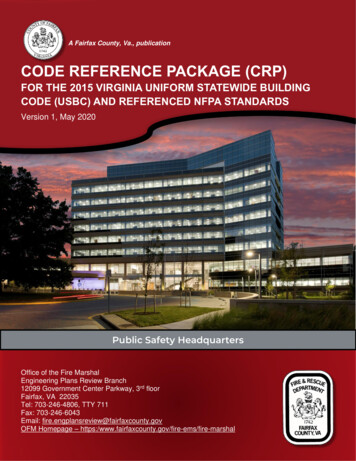
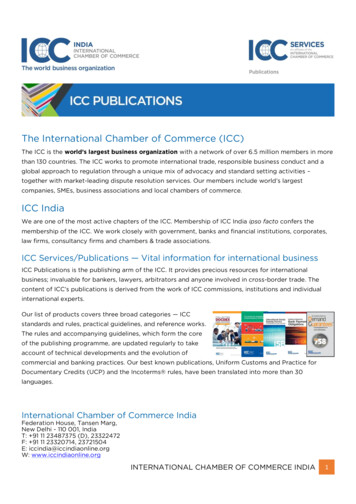
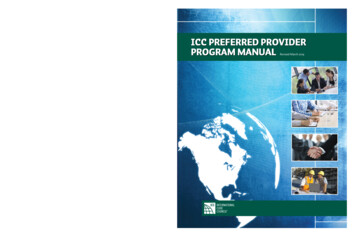

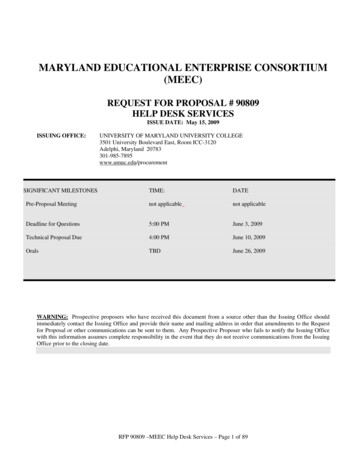
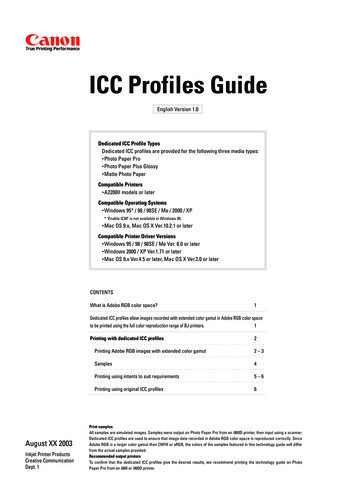
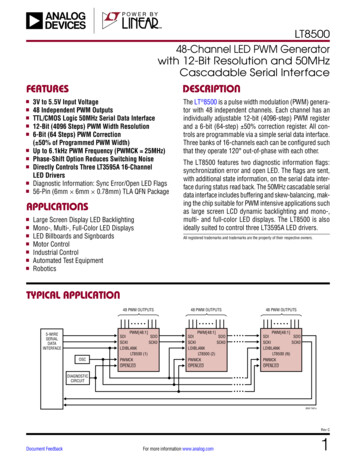
![[IRT] Item Response Theory - Stata](/img/54/irt.jpg)


